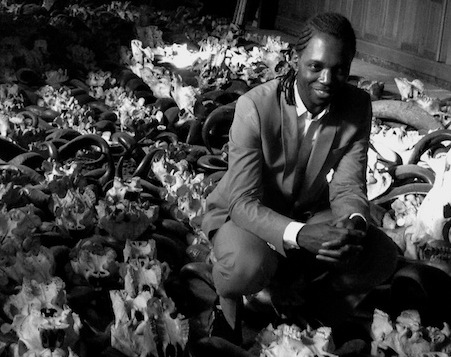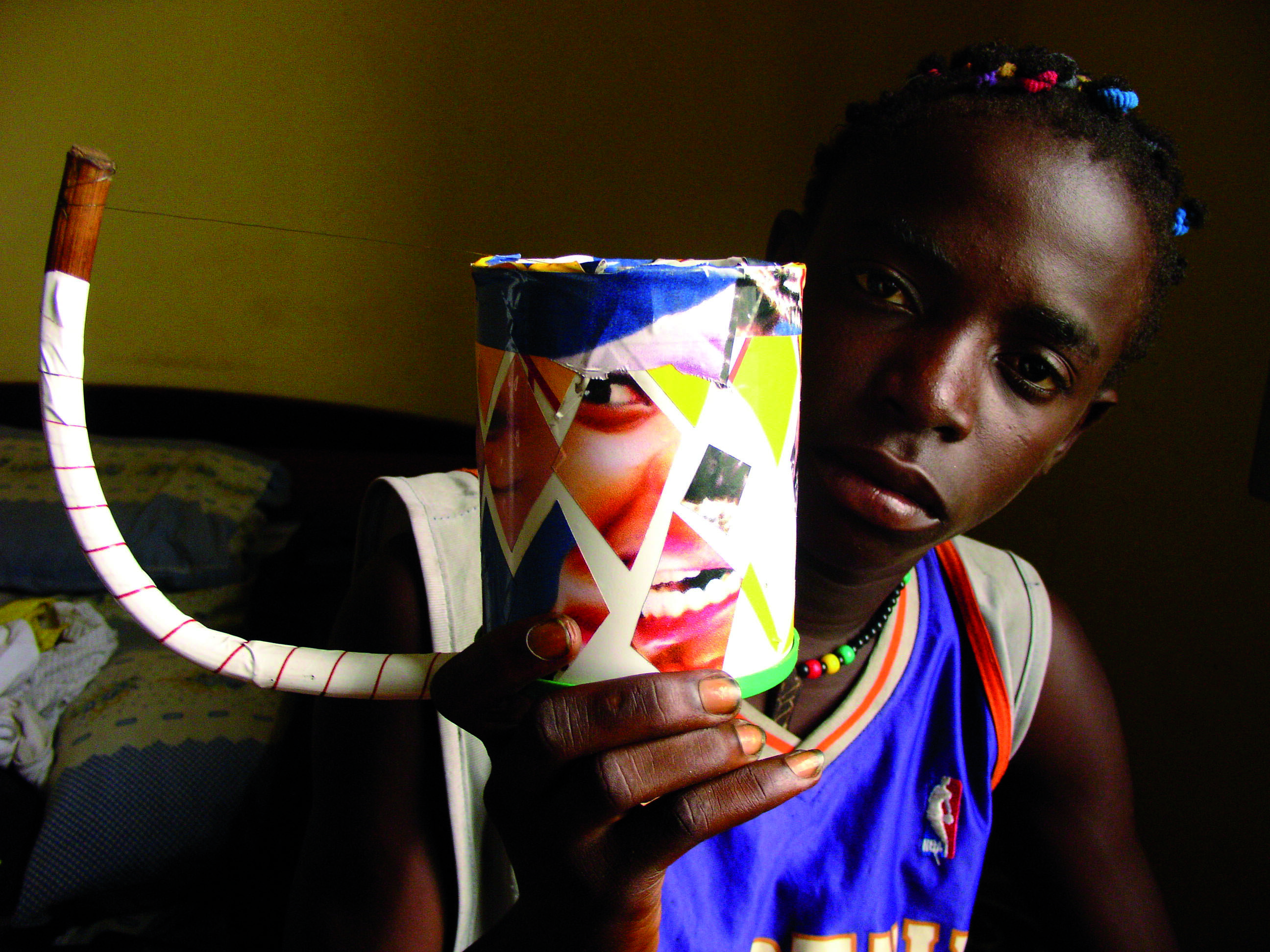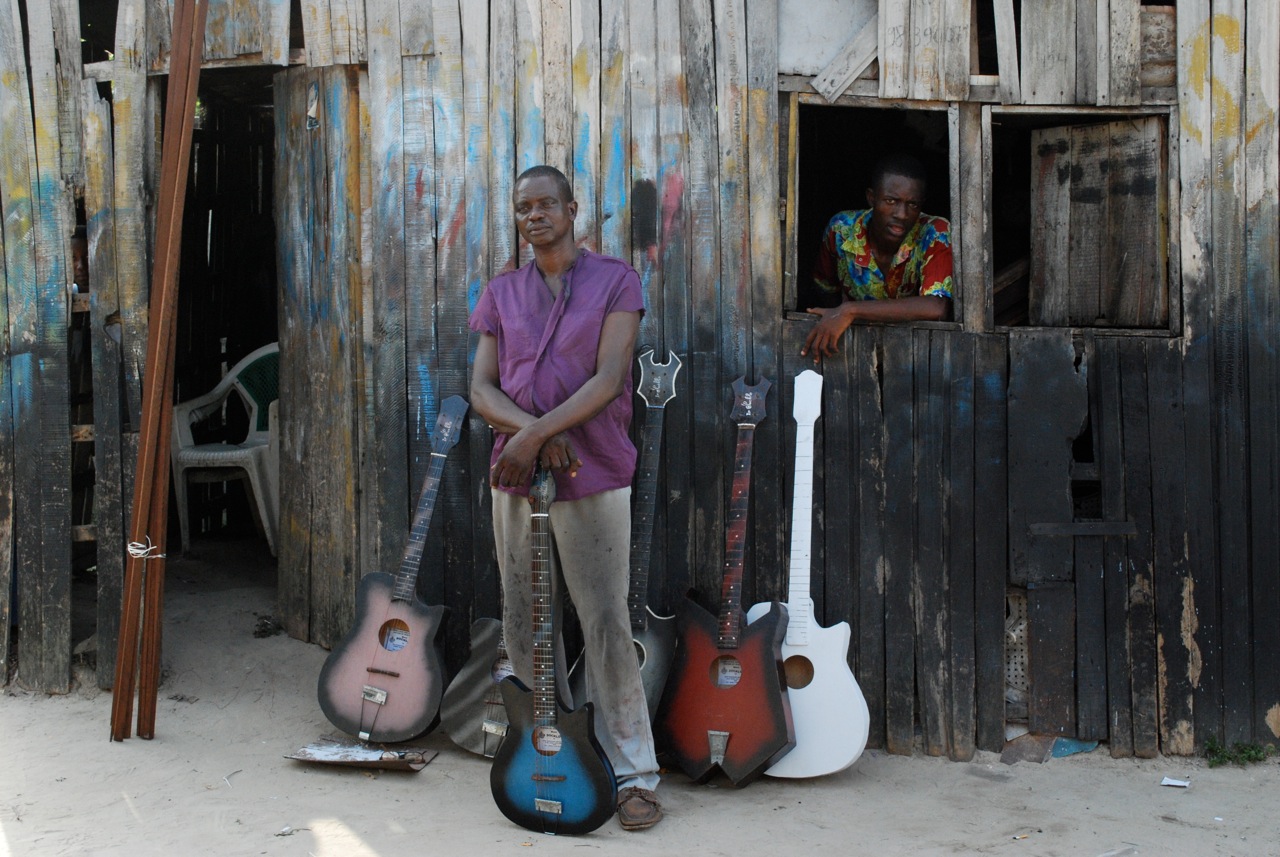It was one of those perfect moments, when passion burns up the concept, and Iness Mezel’s words begin to canter excitedly as she remembers it: “You arrive at the studio with all your baggage and paraphernalia and you lay them out and something just happens, beyond all expectations. Beyond trance. Beyond consciousness. And I love everything about that invisible world beyond, into which you travel with music, because you’re no longer here. We had plenty of moments like that in the studio, when we were just shouting out, “YEAH!” It wasn’t self-satisfaction, it was just about “Wow!””
The concept had already been around for years; a fearlessly modern blend of North African Amazigh or ‘Berber’ music and other styles that inhabit the flipside of Iness Mezel’s complex identity, such as funk, soul and jazz. “My music was there,” says Iness, “but it just needed something or someone to optimize it.” That someone was Justin Adams, English guitarist of blossoming fame, sideman to Robert Plant, half of the award-winning duo Justin Adams and Juldeh Camara, producer of Tinariwen, Natasha Atlas, Lo’Jo and many more. “I looked up Justin’s profile on the web,” Iness continues, “and I thought to myself – he’s going to understand!” And the result of this marriage made in some musical heaven?; ‘Beyond The Trance’
It’s taken a long time coming; seven years since Mezel’s previous album ‘Len’ and thirteen since her debut ‘Wedfel’. “I want to be sincere and I don’t want to compromise my artistic choices so I work slowly. I can’t really say more than that,” Iness states by way of explanation. Her life story doesn’t lend itself to easy conclusions and a flat-pack quick-assembly musical identity. Woman, North African, Berber; there’s so much there to defend, to be proud of, to proclaim but so many pitfalls too, so many easy dead ends and clichés to avoid at all costs.
Fatiha Messaoudi, aka Iness Mezel, was born to a Franco-Italian mother and an Algerian-Kabyle father. The Kabyle are the largest Amazigh minority in North Africa, descended, like all Berbers, from the tribes who inhabited the region before the arrival of the Romans, the Visigoths, the Arabs, the Ottomans and the French. They speak their own language, and are fiercely proud of their distinct culture, which is Mediterranean rather than Middle Eastern or Arab. They inhabit the lofty heights and foothills of the Djurdjura Mountains that rise up to the east of the Algerian capital Algiers. The land is beautiful but hard to cultivate and emigration is hard-wired into the Kabyle experience. Kabyle women are strong, proud and independent. Not for them the veiled subservience prescribed by fundamentalist Islam. Like all Berbers, the Kabyles love music and poetry.
Iness Mezel’s father was born and raised in Ighil I Azzouzen, a tiny Kabyle village not far from the Kabyle capital Tizi Ouzou. He came to France in 1954, on the eve of the Algerian War of Independence.” My father was involved in the struggle,” reveals Iness. “But it was his battle. I can’t really talk that much for him.” Her mother was born and raised in the Auvergne, the wild, remote and hilly heartlands of central France. Iness’ maternal grandfather was an Italian, from the hills of Lombardy. Thus Iness’ blood flows in from hills and mountains on the opposite shores of the Mediterranean, from people who worked the land and lived a tough life softened only by poetry, music, food, family and cultural pride.
For the first seven years of her life, Iness lived in the working class suburb of St Ouen, to the north of Paris, where her father worked as a taxi driver, and her mother as a nurse. Then, at the age of seven, she went to live in Algeria. For two years she spent her holidays with her grandmother and aunts in Ighil I Azzouzen, and went to school in Algiers. “Algeria has left an imprint on me like a tattoo. The strongest memory is the colour of the earth and the grasses, which were dry and brown. I remember my aunts in long dresses with soft materials and simple prints, their bare feet grazed and scratched. I remember the ceremonies and rituals like the jdev, when the Cheikh and other village elders comes to bless a house that has just been built and there are processions of women holding torches. It was just village life. Anything musical was linked to feasts and village occasions.”
At the age of nine the family moved back across the Mediterranean and lived with Iness’ grandmother in the town of Riom es Montagne, deep in the green hills of the Auvergne. Iness and her sister Malika were given the keys to the clubhouse of the local brass band, and they spent many weekends having fun on the instruments. “I didn’t have much of an idea about who I was, but on the other hand I realized that I was absorbed by music. It was like a lifebuoy for me.”
Iness’ grandmothers taught her some profound lessons, not in the literal sense but sub-consciously, by their presence and their actions. “My Algerian grandmother is the archetype of the woman who won’t let herself be pushed around, who runs the household and commands her world. And it wasn’t just her, because my aunts were like that too. My French grandmother was a very very strong woman, whose life was even harder in some ways. I was very close to her.”
After two years of life in the hills, Iness returned to Paris with her family and settled in the suburb of Levallois. She fell in love with pop, disco and funk and remembers the thrill of buying her first record, “Don’t Blame It On The Boogie” during a school trip to London at the age of 14. Other early favourites were Christopher Cross, Elton John and Donald Fagen. Her own musical life was discreet and home-based, mucking about on the piano or cutting up and changing the melodies and lyrics of favourite songs like ‘Yellow Brick Road’ by Elton John with mates from school. She also studied piano at the local conservatory throughout her teens, a rock solid grounding for future musical adventures.
Studying law at the University of Paris, Iness realized that a straight and narrow career path in one of the liberal professions would never satisfy her soul. “At that moment, I asked myself – what’s the most important thing for me? And it was then that I started getting into music more seriously.” She took lessons in lyrical singing with Nicole Maison, a baroque singer with the Camerata de Paris.
Iness had been composing at home on the piano for some years, but now she started to work professionally, mostly as a stand-in singer for various African, jazz and covers bands. Her musical territory became the bars and clubs in the Châtelet area, especially one called the ‘Caf’ Conc’, where she learned the unavoidable lessons of stagecraft and met a new world of musicians, some of whom like bassist Étienne Bapé, drummers Paco Séri and Christopher Henry, pianist Dominique Fillon and guitarist Eric Sauviat became key players in her solo career. Another important teacher was Claude Cesaire, nephew of the famous Antillean poet Aimé Cesaire, who taught Iness the jazz songbook and the inner workings of jazz chord progressions. She also learned jazz improvisation with the Paris-based American singer Sarah Lazarus. After a huge variety of ‘solo’ experiences, Iness formed a vocal duo, which began to earn a useful reputation as a backing vocal unit on the scene.
It was when the established Kabyle singer, writer and film-maker Djur Djura asked Iness to join her group that Iness’ diffuse musical ambitions were suddenly redirected towards a new and compelling objective. Djur Djura was already a name of some renown in the world of Algerian and Amazigh music. With her, Iness started to perform in major concert halls and festival, and gain a privileged access into the heart of the Amazigh music scene. “When I was approached by Djura it was like an answer to my self-searching as an artist,” Iness remembers. “I discovered the music of my brothers and sisters and I discovered what it meant to sing in Kabyle. I also began to develop a political conscience. Things began to make sense.”
Djur Djura also introduced Iness to her life-long friend, manager, mentor, percussionist, adviser and rock in troubled times: Nora Abdoun-Boyer. Iness, Nora and her sister became a unit of musical adventurers, like a family of like-minded sisters with shared origins and creative ambitions, who would spend many hours working together, inching towards a new and very personal idiom that mixed Kabyle music and lyrics with the most extraneous styles. Iness and her sister would compose songs together, and Nora was the sounding board, the trusted ‘ears’ of the trio. After many months the trio performed together with a violinist and a second percussionist at the Palais de la Mutualité in Paris supporting Idir and many other Amazigh ‘greats.’ “They must have thought we were a UFO which had just landed,” Iness recalls with a resigned chuckle. “Admittedly, we were heading the right direction, but we hadn’t gone deep enough.”
The trio worked at home, whilst Iness was still going out to sing with a range of different artists, including the avant-garde singer Tamia Valmont. The grail was a modern, North African, Mediterranean but intensely personal style, in other words, a true reflection of Iness’ identity. The first album ‘Berber Singing Goes World’, released on Auvidis in 1997, was only a partial realization of this dream, despite being warmly received by the critics. In 1999, the album was released under the title ‘Wedfel’ with extra tracks on the the French label Naïve.
After the release of the album and a series of concerts in Morocco and Canada, her sister quit. “She left without warning,” Iness admits reluctantly. “I think she was searching for herself at the time.” It was a difficult period, but calamity turned into a strange kind of blessing. “It’s almost as if I was reborn after that incident,” she says. “I had to walk on my own two legs. I had to define myself. Nora and her father Boussad helped me a lot. They’re Kabyle, and he’s very open and young at heart. At one point I asked him to ‘dub’ me, like Kings used to do to Knights in the old days. And he suggested the name ‘Iness Mezel’, which means, ‘Tell him never to despair’.”
The next album ‘Len’, which Iness calls the first real Iness Mezel album, with its ever closer marriage of Kabyle with funk, pop and western classical music, was recorded in 2001 and released in 2003. “It’s the album on which I really began to express my whole self for the first time, to lay my guts on the table,” she says. “I had things to prove, technically, musically. It was more radical than anything I had done before. I was no longer looking for myself. I knew which ideas I wanted to pursue and I was very proud of the result in fact. I needed the recognition which that album gave me.”
Nora and her father also helped Iness to crystallize her attitude towards Tamazight, the loose collective name for the many distinct dialects of the Berbers. It became a precious tool that Iness felt the need to defend. “I love the musicality of Kabyle but I don’t master the language in a poetic sense of the term,” says Iness. “So I write in French, and then translate that into Kabyle and base my lyric on that translation. I used to freak out about the idea of singing in French because I feel completely naked when I do. But singing in French is also a way of expressing all aspects of my personality. It allows me to be more objective. I’ve also used poems by Si Mohand ou Mohand, a famous wandering 19th century Kabyle poet, in some of the songs. I wanted to pay tribute to him”
So, in many ways, ‘Beyond the Trance’ is a reaffirmation; a reclamation of confidence, “of giving myself to myself, ” as Iness describes it. “I was able to see myself how I am, and express the whole me; French, Kabyle, Parisian, everything.” Not only was there the new-found courage to bare her soul more fully in her everyday language of French, but also the strength to allow others into her creative process without fear of loosing control. “I’ve tended to operate in quite a solitary way at times. And I’ve never been part of a group in the classic sense. So this meeting with so many new musicians is wonderful and interesting. I feel I’m liberating myself.”
Self, identity and musical style walk hand in hand, each one defining the other. For Iness Mezel, none of the three has been easy to grapple, to pin down and define. In many ways, it was a feat that could only be achieved when her music stopped asking so many questions, and demanding so many answers. It could only be achieved when the music broke free of the concept and went into that space beyond; joyful, confident and complete.
Andy Morgan. (c) 2010
Artist Biography written for Wrasse Records – Dec 2010







